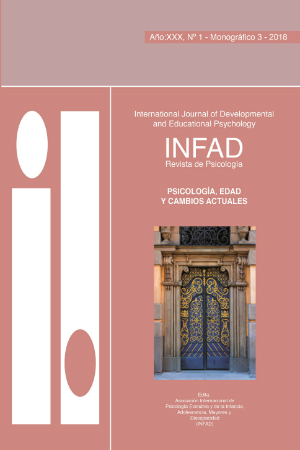Youth Empowerment towards Social Responsibility through Service-Learning Program: an Exploratory Analysis of a Private High School in Dubai, United Arab of Emirates
Основное содержимое статьи
Аннотация
This study investigates student personal development and sense of social responsibility through a service-learning program in a private high school in Dubai-UAE. This study utilized a qualitative research approach with a single case study design to provide a rich and contextualized picture of the program from multiple perspectives (school leadership, teachers, service-learning team and students). Data was collected through triangulation by means of semi-structured interviews, focus groups, participatory and non-participatory observations, field notes, artifacts, and document analysis. Content analysis was used in analyzing the collected data to identify emerging themes and patterns related to service-learning and its effect upon students. The study’s findings revealed that the school applied essential elements of service-learning. The participants of the service-learning program exhibited social responsibilities of greater community awareness, teamwork, commitment to community, gained self-esteem, and self satisfaction as they reflected on their ability to accomplish their tasks. This study’s goal is to bring about educational policy pertaining to service-learning as a legitimate educational pedagogy to be adopted in the UAE schools. This study hopes to contribute to service-learning program research and enrich knowledge and best practices in the UAE and worldwide.
Информация о статье
Раздел
Aquellos autores/as que tengan publicaciones con esta revista, aceptan los términos siguientes:
- Los autores/as conservarán sus derechos de autor y garantizarán a la revista el derecho de primera publicación de su obra, el cuál estará simultáneamente sujeto a la Licencia de reconocimiento de Creative Commons que permite a terceros copiar y redistribuir el material en cualquier medio o formato bajo los siguientes términos: —se debe dar crédito de manera adecuada, brindar un enlace a la licencia, e indicar si se han realizado cambios. Puede hacerlo en cualquier forma razonable, pero no de forma tal que sugiera que usted o su uso tienen el apoyo de la licenciante (Atribución); — no se puede hacer uso del material con propósitos comerciales (No Comercial); — si se remezcla, transforma o crea a partir del material, no podrá distribuirse el material modificado (Sin Derivadas).
- Los autores/as podrán adoptar otros acuerdos de licencia no exclusiva de distribución de la versión de la obra publicada (p. ej.: depositarla en un archivo telemático institucional o publicarla en un volumen monográfico) siempre que se indique la publicación inicial en esta revista.
- Se permite y recomienda a los autores/as difundir su obra a través de Internet (p. ej.: en archivos telemáticos institucionales o en su página web) antes y durante el proceso de envío, lo cual puede producir intercambios interesantes y aumentar las citas de la obra publicada. (Véase El efecto del acceso abierto).

Este obra está bajo una licencia de Creative Commons Reconocimiento-NoComercial-SinObraDerivada 4.0 Internacional.
Как цитировать
Библиографические ссылки
Al Bayan (214). Shikha Bint Seif Emphasizes on the Importance of Encouraging Students in voluntary work.
Al Khaleej (2013). Voluntary work in the UAE: the Reality, challenges and Recommendations. [on line]. [Accessed 4 September 2014] Available at: http://www.alkhaleej.ae/alkhaleej/page/5c49cdc2-b0d4-4a8e-864a-6b280c67dee7.
Arenas, A.A., Boswortha, K., & Kwandayib, H. (2006). Civic Service Through Schools: An International Perspective. British Association for International and Comparative Education. Routledge, vol. 36, (1), pp. 23–40.
Billig, S.H. (2000). Research on K-12 School-Based Service Learning: The Evidence Builds. RMC Research Corporation, Denver, CO. [online]. [Accessed 1 June 2014] available at http://www.educationreporting.com/resources/CLP_Billig_article.pdf
Conrad, D.E., & Hedin, D. (1981). National Assessment of Experiential Education: Summary and Implications. Journal of Experiential Education, vol.4 (2), pp. 6-20.
Conrad, D.E., & Hedin, D. (Eds.). (1982). Youth Participation and Experiential Education. Journal of Child and Youth Services, vol. 4(3/4), New York: Haworth. pp.156.
Corps, M. (2012). Civic Engagement of Youth in the Middle East and North Africa: An Analysis of Key Drivers and Outcomes [online]. Mercy Corps. [Accessed 10 June 2014]. Available at: www.civicenterprises.net.
Counts, G.S. (1932). Dare The Schools Build a New Social Order. New York . The John Day Company.
Edward, B. F. (2002).Learning in Deeds. The power of Service –learning for American School. A Report from the National Commission on Service-Learning.K. Kellogg Foundation, [online]. [Accessed 10 October 2015]. Available at http://www.learningindeed.org.
Erikson, E. (1968). Identity, youth, and crisis. New York: Norton.
Hamilton, S. F., & Fenzel, M. (1988).The Impact of Volunteer Experience on Adolescent Social Development: Evidence of program effect. Journal of Adolescent Research, vol. 3 (1), pp. 65-89.
Kellough, R. D., & Kellough, N. G. (2008). Teaching Young Adolescents: Methods and Resources for Middle Grades Teaching (5th ed.). Upper Saddle River, NJ: Pearson Merrill Prentice Hall.
Knowledge and Human Development Authority (2013). Annual Report: The Performance of Private Schools in Dubai. Dubai Schools inspection Bureau. [online]. [Accessed 1 June 2014] available at http://www.khda.gov.ae/CMS/WebParts/TextEditor/Documents/KHDA%20annual%20report%202013_english.pdf
LeSourd, S. J. (1997). Community Service in a Multicultural Nation. Community Service Learning, vol. 36(3), pp. 157-163.
Miles, M. & Huberman, A.M. (1994). Qualitative data Aanalysis. Thousand Oaks, CA, Sage Publications.
Moore, K.P., & Sandholtz, J.H. (1999). Designing Successful Service learning Projects for Urban Schools. Urban Education, vol.34(4), pp. 480-498.
Muscott, H.S. (2000). A review and Analysis of Service-Learning Program Involving Students with Emotional/Behavioral Disorders. Education and Treatment of Children, vol. 23(3), pp. 346-368.
National Service-Learning Cooperative (1998). Essential Elements of Service-Learning. St. Paul, MN: National Youth Leadership Council.
Newmann, F.M., & Rutter, R.A. (1983). The Effects of High School Community Service Programs on Students’ Social Development. (Final report to the National Institute of Education,Washington, DC). Madison: Wisconsin Center for Education Research.
Steinberg, K.S., Bringle, R. G., & Williams, M. J. (2010). Service-learning Research Primer. Scotts Valley, CA: National Service-Learning ClearingHouse [online]. [Accessed 15 June 2014]. Available at: http://servicelearning.gov/filemanager/download/Service-Learning_Research_Primer.pdf
UAE Vision 2021. (2010). UAE National Charter 2021 [online]. [Accessed 1 March 2010]. Available at: http://www.vision2021.ae/
Youniss, J., & Yates, M. (1997). Community Service and Social Responsibility in Youth. Chicago: University of Chicago Press.

